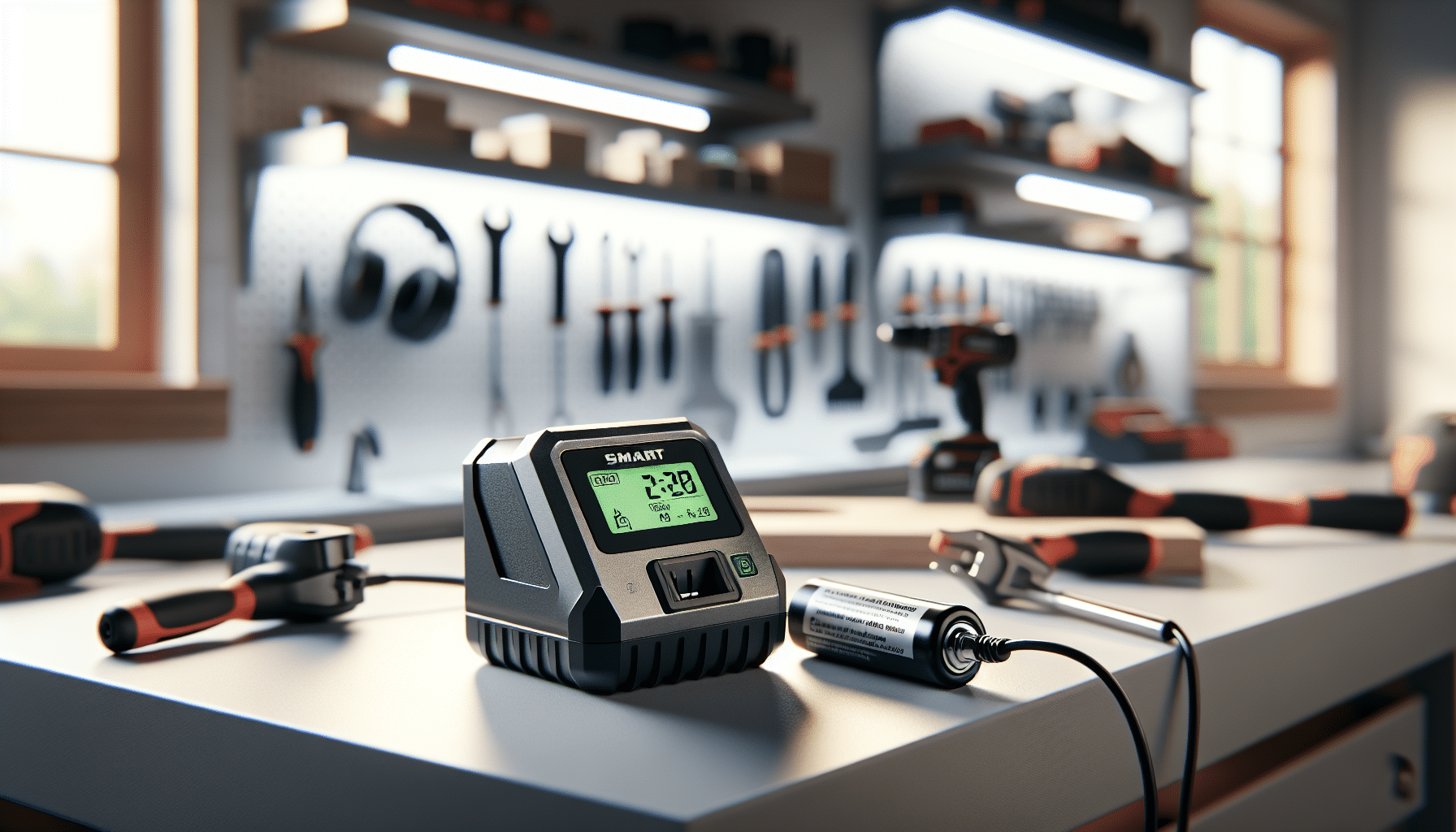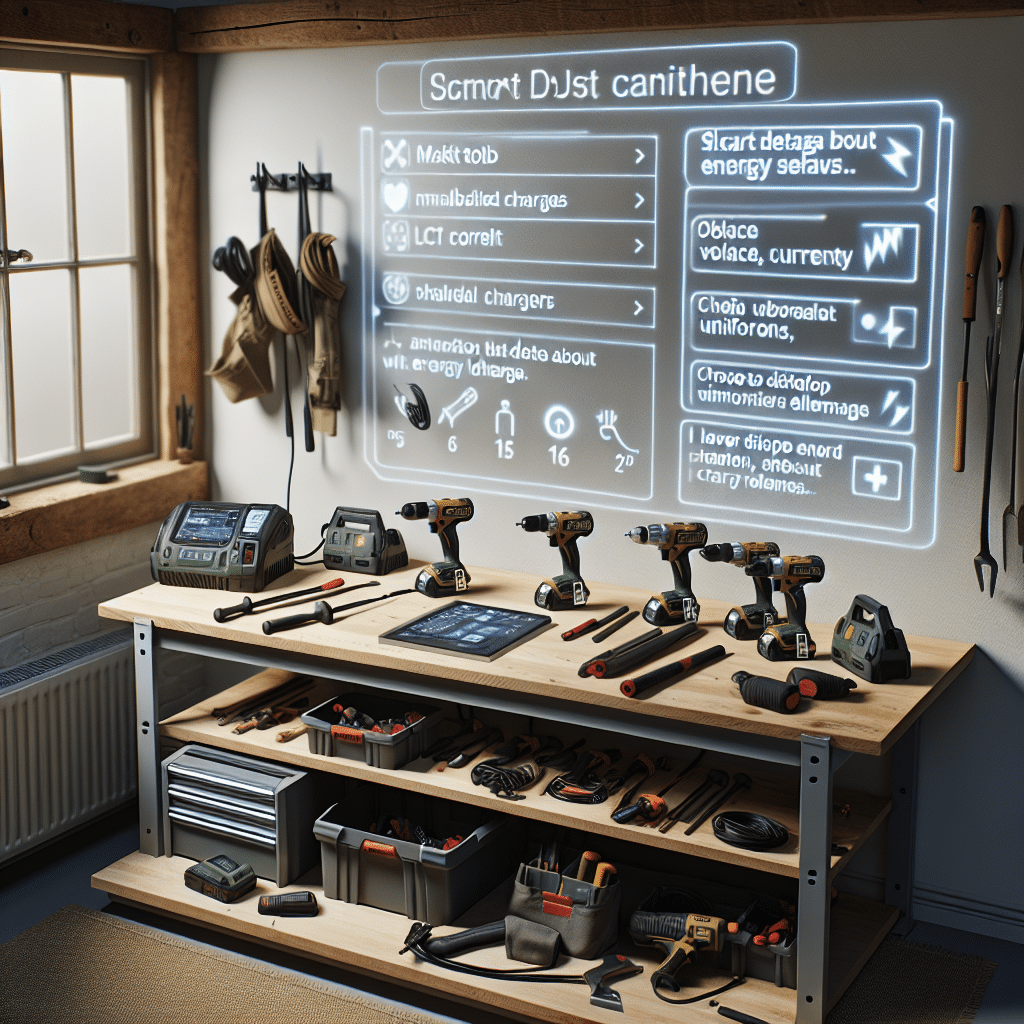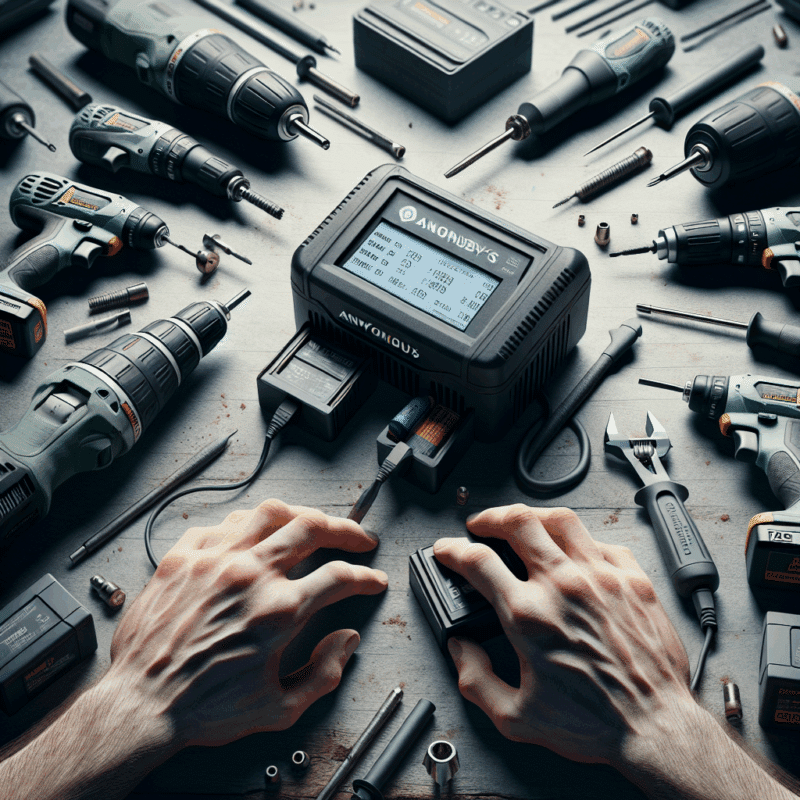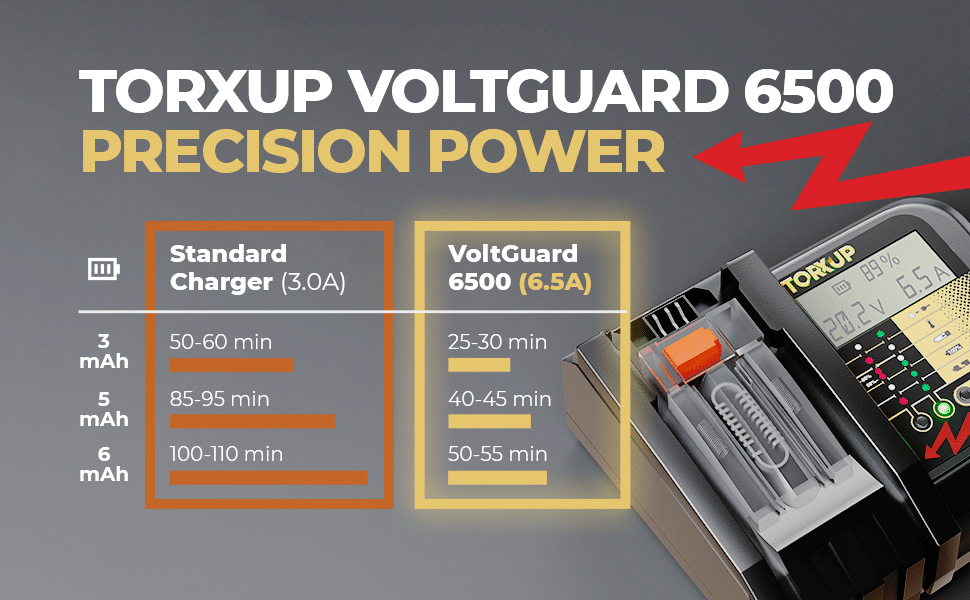Can Smart LCD Tech Cut Power Tool Running Costs?
In This Article
- Smart LCD chargers reduce standby drain and energy waste.
- They prevent overcharging and extend battery life by up to 30%.
- Makita LXT compatibility ensures seamless integration for trade professionals.
- Greater coordination and visibility improve workshop and site efficiency.
- Both DIY users and tradespeople can achieve full ROI within one year.
- Look for essential features like diagnostics, multiple ports, and warranty support.
Why Power Tool Operating Costs Matter
Understanding ongoing workshop and site costs
It’s easy to focus on the upfront expense of power tools while overlooking the hidden costs of keeping them charged. In high-demand environments like trade workshops and construction sites, battery-powered tools are central to daily operations. While convenient, batteries require frequent charging—drawing consistent power and contributing to cumulative energy bills. With electricity costs rising year on year, monitoring and minimising operational energy usage is now a critical concern for both individuals and business owners.
Aside from direct energy expenditure, frequent charging leads to faster battery wear, increasing the need for replacements. These costs quickly add up over a fiscal quarter, let alone a full year of operation. When multiple batteries are in rotation, especially for brands like Makita or DeWalt, inefficiencies in the charging process can compound into hundreds of pounds lost annually. A strategic pivot towards efficient charging is more than convenience—it’s a cost-control imperative.

What Is Smart LCD Charging Technology?
Digitally precise control over charging
A smart LCD charger is an advanced battery charger that uses microprocessor-controlled logic and digital display technology to manage and visualise the battery charging process. Unlike traditional chargers that function with a generic “plug-and-wait” operation, smart chargers precisely regulate input current, voltage, and duration based on battery type, charge state, and health. The integrated LCD screen provides real-time insights into every phase of the charge cycle—from current amps being drawn, voltage capacity, and battery temperature, to overall charging progress.
This smarter interface transforms battery charging from a background task into an optimisable workflow. With this level of visibility, users can spot inefficiencies early, spot degraded batteries before they fail, and avoid overcharging altogether. Smart LCD chargers often include safety diagnostics, segmented charge indicators, and alerts that prevent misuse. They essentially interact with the battery in an intelligent dialogue, rather than just “powering it up”.
“A smart LCD charger doesn’t just deliver electricity—it delivers intelligence.”
How Smart LCD Chargers Reduce Energy Waste
Use voltage readouts to eliminate standby drain
One of the most impactful advantages of using a smart LCD charger is its ability to minimise standby energy loss. Traditional chargers, even after completing a charge cycle, often continue to draw energy if they remain plugged in. This background consumption might seem negligible, but across multiple tools and over prolonged durations, it adds up substantially. This phenomenon, sometimes called “phantom power drain”, is an unseen but steady drain on your budget.
Smart LCD chargers counter this waste by automatically entering low-power standby modes post-charge. Moreover, thanks to the visible voltage and amperage readouts, users are prompted to disconnect batteries or unplug the unit when charging is complete. Even more impressively, many models shut off power delivery altogether once they detect a full charge, completely preventing energy bleed.
Preventing Overcharge and Battery Degradation
Feature benefits of real-time feedback
Battery overcharging not only wastes energy but also damages the lithium cells over time, shortening the battery’s usable lifespan—a costly setback for both tradesmen and hobbyists. Smart LCD chargers combat this by employing temperature sensors, charge timers, and responsive feedback control to ensure charge termination at the correct point. Real-time data feedback empowers the user to closely monitor the heat buildup and current flow, preventing overcharge scenarios altogether.
Furthermore, many smart chargers allow for battery conditioning and reconditioning modes. These help refresh older packs that might display diminished capacity. By preventing overcharge and actively managing battery health, smart chargers extend overall battery life by up to 30%, making them a natural investment for sustainability-minded professionals.
Compatibility with Makita LXT Systems
Why trade professionals prefer universal fit
When assessing which smart LCD charger to buy, compatibility with existing tool platforms is vital. Makita’s LXT battery system is among the most widely adopted across the UK’s trade industry, favoured for its reliability and range of tools that use interchangeable batteries. A smart LCD charger that fits seamlessly with Makita LXT ensures tradespeople can upgrade their charging infrastructure without replacing their battery portfolio.
Universal fitment also simplifies fleet management. Crews can share charging stations without compatibility concerns, reducing downtime and increasing jobsite coordination efficiency. Look for smart LCD chargers that support both 14.4V and 18V LXT series to get full usage flexibility. Models with multi-port capabilities allow simultaneous charging with independent LCD feedback channels—ideal for high-rotation battery fleets.
Energy-Saving Results from Real-World Use
Testimonials and usage case examples
Feedback from trades professionals across the UK consistently validates the energy-saving claims of smart LCD technology. A Cardiff-based construction firm reported cutting its rechargeable tool energy costs by 22% after integrating smart LCD chargers across its small tool fleet. With real-time tracking, the manager observed far fewer hours wasted charging fully-drained or already full batteries, greatly reducing both energy consumption and excessive battery cycling.
DIY users also see tangible ROI. A Reddit UK user shared how one charger set reduced their monthly workshop electricity bill by £12. Multiplied across a year, this brings savings near £150—sufficient to completely recoup the initial device investment. Additionally, multiple users praised the fault alert systems built into smart chargers, which flag underperforming batteries for selective replacement—eliminating guesswork and unnecessary purchases. Learn more about Workshop Power Efficiency & Smart Charging
Smart LCD Display Benefits Beyond Charging
Team coordination, workflow visibility
While energy efficiency remains the core purpose, smart LCD chargers offer further advantages that enhance daily workflow. On larger jobsites, visibility into charge progress allows better rotation between available batteries. Team members can quickly glance at the LCD to ascertain whether a battery is 60% or 98% charged, preventing wasted tool changeover or failed starts during critical tasks.
This granular display of information becomes especially valuable in multi-bay or shared charger systems. Workers avoid overloading outlets, prevent redundant battery insertions, and reduce wait times. Furthermore, fleet managers gain clearer oversight by noting charge patterns, detecting abnormal battery behaviour, and scheduling maintenance preemptively. For teams managing multiple sites or high-labour days, this visual clarity improves operational rhythm.
DIY vs Trade: Different Needs, Same Payback
Calculating return on charger investment
The pricing of a smart LCD charger may initially seem steep compared to traditional models. However, the long-term return on investment (ROI) is both logical and demonstrable—especially when viewed against tool longevity, reduced battery replacement costs, and trimmed energy bills. For DIY users, the return manifests in greater data insight, longer battery life, and smoother project automation. The charger becomes a small workshop fixture rather than a hidden peripheral.
Tradespeople will likely realise ROI faster due to higher utilisation rates. Consider a roofing contractor using six LXT batteries daily across two crews. Avoiding even two premature replacements/year at £60 each, combined with £100+ annual energy savings, makes the upgrade decisively economical. Whether for weekend projects or daily jobsite ops, a smart LCD charger’s ability to moderate cost creep makes it a top-tier investment. Expert overview of smart display technologies
Feature Checklist for Choosing a Smart LCD Charger
What to look for when upgrading
Buyers should focus on the following core features when selecting their smart charger:
- Large, readable LCD screen – with real-time voltage, current, and temperature stats.
- Auto cut-off and heat protection – prevents overheating and overcharging.
- Battery diagnostic mode – identifies weak or damaged packs.
- Multi-port capacity – essential for teams or workshop setups.
- Makita LXT compatibility – lowers friction and transition costs.
- Warranty and CE certification – ensures reliability and compliance.
Evaluating at least five manufacturer models and reading professional reviews will help confirm the best unit for your specific application. Websites specialising in professional tools often offer comparison charts and customer Q&A areas. Read a related article
Where to Buy a Reliable Smart LCD Charger
Advice on source, warranty, and trust
For guaranteed performance, source your smart LCD charger from reputable tool suppliers or official brand partners. Avoid listings that lack OEM logos or omit warranty documentation. Many trusted UK retailers—both online and brick-and-mortar—offer a two-year standard warranty on professional-grade chargers. Always double-check voltage compatibility, supported battery formats, and return policies before purchasing. AI advancements in efficient resource use
Consider looking for seasonal discounts or bundle deals that package chargers with extra battery packs or accessories. These combos can further accelerate your ROI timeline. If you’re purchasing for a team or site, bulk pricing may be available—just ask!
Final Thoughts on Smart LCD Charger ROI
A smart LCD charger isn’t a luxury—it’s a strategic tool investment. It transforms power charging into an efficient, trackable, and safe process. From reducing energy waste and battery degradation to improving workflow timing and minimising costs, the advantages are diverse and measurable. Both DIYers and trade professionals will find tangible and consistent payoffs over time. When smart technology meets everyday tools, the result isn’t just savings, but smarter working.
Great guide on can-smart-lcd-tech-save-power-tool-costs – Community Feedback
How does smart LCD tech help save on power tool operating costs?
Smart LCD chargers provide real-time data to optimise charging, ensuring batteries are charged efficiently. This minimises wasted energy, reduces overcharging, and helps prolong battery life, leading directly to lower operating costs for both workshops and job sites.
What features should I look for in a smart LCD charger?
Look for real-time voltage and current displays, overcharge protection, compatibility with your battery systems, and robust build quality. These features maximise both energy savings and safe, efficient battery management for power tools.
Are smart LCD chargers worth the investment for trade professionals?
Yes, trade pros often see rapid payback from improved energy management, extended battery life, and time saved monitoring charge cycles. The operational efficiency gains and cost reductions quickly offset the initial outlay.



